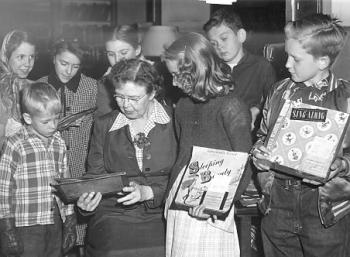The Carnegie Library
During this era, the library was dramatically affected by two major factors, The Depression and WWII. The Depression resulted in income cuts and the curtailment of library hours and services.

During these years, book purchases were cut as were other services. The Bookmobile service was seriously reduced. It did not operate in the summer and service was withdrawn from 54 rural schools in 1933. While the service continued every third week instead of every second, it stopped in only five towns. At the same time, libraries were withdrawn from six city schools. Despite the economic problems, however, the library still attracted many patrons. Some people came to retrain themselves in the hopes of securing better jobs while others just came to find temporary shelter. On August 3, 1931, the idea of building a children's room was discussed in the board meeting. It was proposed to establish a "library station" at Ellettsville in January of 1939. It was implemented in 1968.
During the War years, library services decreased, but the Bookmobile kept serving despite a mileage reduction. During World War II, basic library services remained, but library patronage fell due to gasoline rationing. The library also supported the war effort by participating in the Victory Book Campaign, a program which collected books for the armed services. Staff salaries, however, increased partly due to Miss Ashby who insisted that she could not hire and keep competent librarians if they were getting better offers elsewhere. In May of 1944, Miss Ashby prepared a report on postwar planning and an architect was hired to draw up plans for the enlargement of the Carnegie building.
